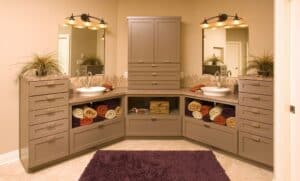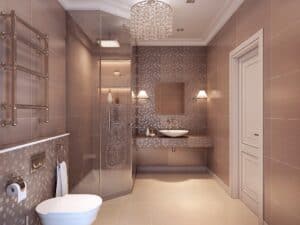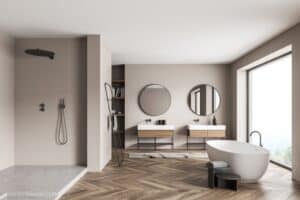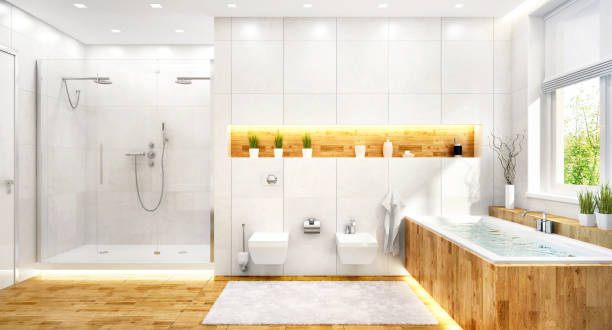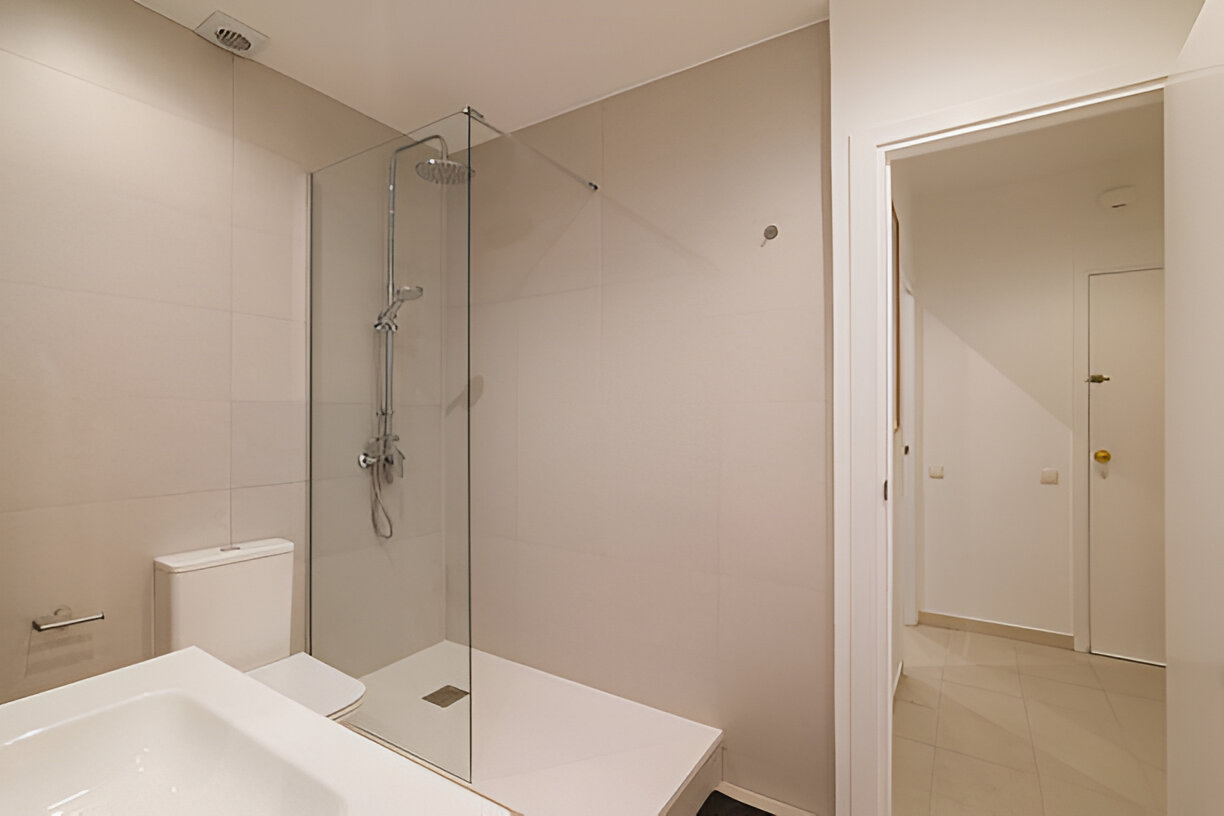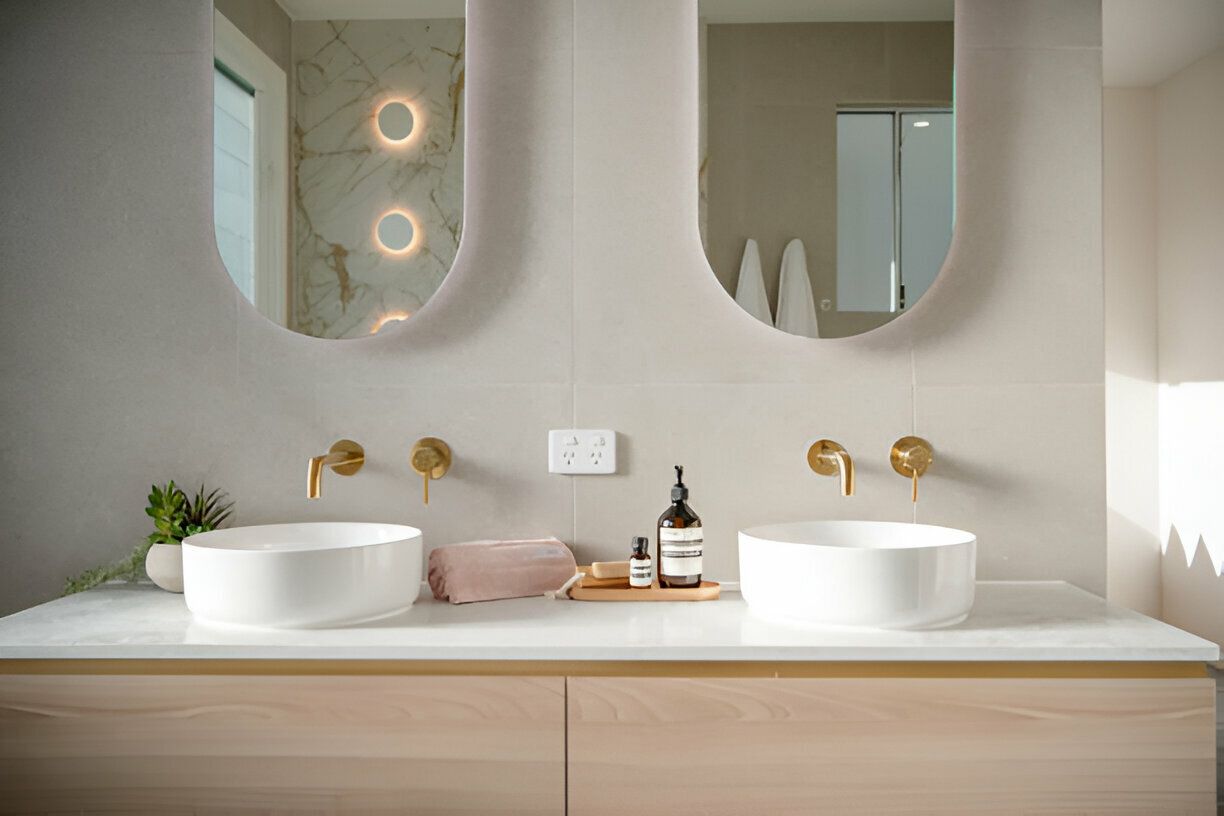A bathroom is a confined area, and you want to maximize the effectiveness of any changes you make — including your vanity. Since it has the potential to become the focal point of your small bathroom, you must get it right the first time.
However, how do you choose bathroom vanities that look aesthetically pleasing and meet all of your needs? Do you get inspiration from the current trends online or go your own way? Luckily, we can help you choose the best bathroom vanity for your home.
Ways To Choosing Bathroom Vanities
While we wish the process could be as simple as 1, 2, 3, it does require more thought and preparation. You must consider everything from hardware to aesthetics. These steps will help you consider all relevant information while determining the best modern bathroom vanities that match your lighting, appliances, and furniture.
Remember: These steps apply to the vanity in a master bathroom that is frequently used. If you’re renovating a guest bathroom or powder room, you won’t need to plan as extensively. Take advantage of the opportunity to be stylish and fun without regard for what else it has to do.
1. Consider Who Will Utilize It and How
The bathroom vanity you choose should consider who will use it and how they will use it.
For instance, if you’re remodeling an end suite for you and your partner and you both need a sink in the morning, you may prefer one with a double sink. On the other hand, if you’re single and living alone, you can get away with a single sink.
Additionally, you must consider how you intend to use your countertop. If you enjoy doing your own hair and makeup, you’ll need more counter space and storage to accommodate necessities.
Reeves Remodeling designed numerous vanities over the years and will be able to assist you in creating a design that works for every person and purpose.
2. Determine the Location of Your Plumbing
This is most often the part of your bathroom that defines the location of your vanity; making changes to it requires time and money.
This means that your plumbing plays a role when shopping for different vanity styles and features. For instance, bathroom vanities installed on the floor can make use of the standard layout. On the other hand, wall-mounted vanities would involve relocating the sink’s plumbing hookups.
It is not impossible to relocate plumbing; it just depends on what you want and the budget you have allotted for the project. If you choose to work with the current arrangement, this will assist you in narrowing down your bathroom vanity selections.
3. Examine Potential Obstacles to Verify The Placement and Measure
Bathroom designs can be modified at any time, but other things inside it — like the wall — are a little more difficult to alter. This limits the placement options for vanities. Consider the following while determining placement:
- Door Swing: Bathroom doors swinging inward and colliding with the wall or vanity cabinets can be inefficient and irritating.
- Shower: Do you prefer to take a bath with a door rather than a curtain? This is another factor to take into account while determining the best placement for bathroom vanities.
- Toilet: Would you like one to be located in front of, beside, or far from the toilet? Will you run into it while attempting to ‘go’?
- Traffic Flow: Vanities should not hinder navigating the remainder of bathrooms. If you keep knocking into a vanity cabinet while trying to dodge something else, you’re likely to become annoyed, if not bruised.
Once you have an approximate placement, you can narrow down the size in the same manner. This is when a tape measure is quite useful! You (or your contractor) will need to take some measurements to estimate the maximum length and width of the countertop based on the considerations outlined previously.
The final result should be a set of measurements that indicate the approximate size, allowing you to proceed to the installation. Bathroom vanities are typically 31 inches high. However, this is a matter of personal preference. Taller adults prefer a countertop with longer legs, while small kids benefit from shorter models.
What are standard vanity top sizes?
- Width: 12-84 inches; normal widths are 24, 30, 36, 48 and 60 inches
- Height: 31-35-1/2 inches
- Depth: 17-24 inches
4. Identify How Much and What Storage Space You Need
One of the advantages of having a vanity cabinet is the additional storage space.
Before we get too excited about cabinets, it’s necessary to consider the length and width you estimated in step three.
Depending on the available space and the items you wish to store in a cabinet, some compromise may be necessary. For instance, you may be unable to fit three columns of drawers or two cabinets within the range where the faucet is. Good thing that Reeves Remodeling can create cabinet designs that work in any situation.
Note that things require different kinds of range. Drawers will protrude forward, and cabinet doors will swing out and to the side. One may work better than the other, depending on the location and style of your bathroom. Whatever cabinet design you choose for this project, we have some organizational tools that will provide you with maximum storage with the least amount of hassle.
5. Specify Your Sink Vanity Style
Faucets and taps are only one portion of the sink. That’s why you should examine the bowl as well and how it will affect the appearance and functionality of your bathroom vanity.
With so many styles available, it’s easy to get overwhelmed when choosing the one you’ll like the most. The ideal strategy is to determine the amount of counter space you need and how much area should be reserved for the sink.
Whether single or double sink, it will take up some counter space. So compare standard sinks to vessel, undermount, and all-in-one models to get a sense of how you want your sink vanity to be configured.
The size of your sink will also be determined by your vanity’s objectives. For instance, if you’re working with a limited surface area, a smaller sink would help you maximize it.
6. Use Materials That Can Withstand Wear and Tear and Still Look Good
Throughout its life, bathroom vanities will come in contact with various substances. Water, makeup spills, and cleaning products are just a few examples. Additionally, it will be in a more humid room, thanks to the steaming hot bath we enjoy.
This means you’ll want one with hardware that can withstand everything life throws. Certain materials perform better in humid, warm settings than others.
While you may prefer the appearance of a particular material or finish, it may not be waterproof or resistant to scratches. Laminate, marble, wood veneers, and thermofoil are all durable materials that look nice in the bathroom.
Moreover, it is recommended that you shop for a solid vanity top and avoid any grouting that will be difficult to clean later. Select a countertop that will complete the overall look of your bathroom.
7. Note That There Are No Wrong Personal Style Choices
By the time you’re finished, your vanity top should resemble one that you can’t wait to use and enjoy forever. When it comes to final designs, there are no wrong choices — only your choices!
If you’re still unsure of your personal style, Reeves Remodeling has a design gallery that highlights some excellent examples that will spark your imagination.
Our design professionals can help you with this step-by-step approach and any other bathroom design needs that’ll complete the overall aesthetic of your home. All you have to do is schedule an appointment, and we’ll assist you in getting the best bathroom vanities of your dreams.

